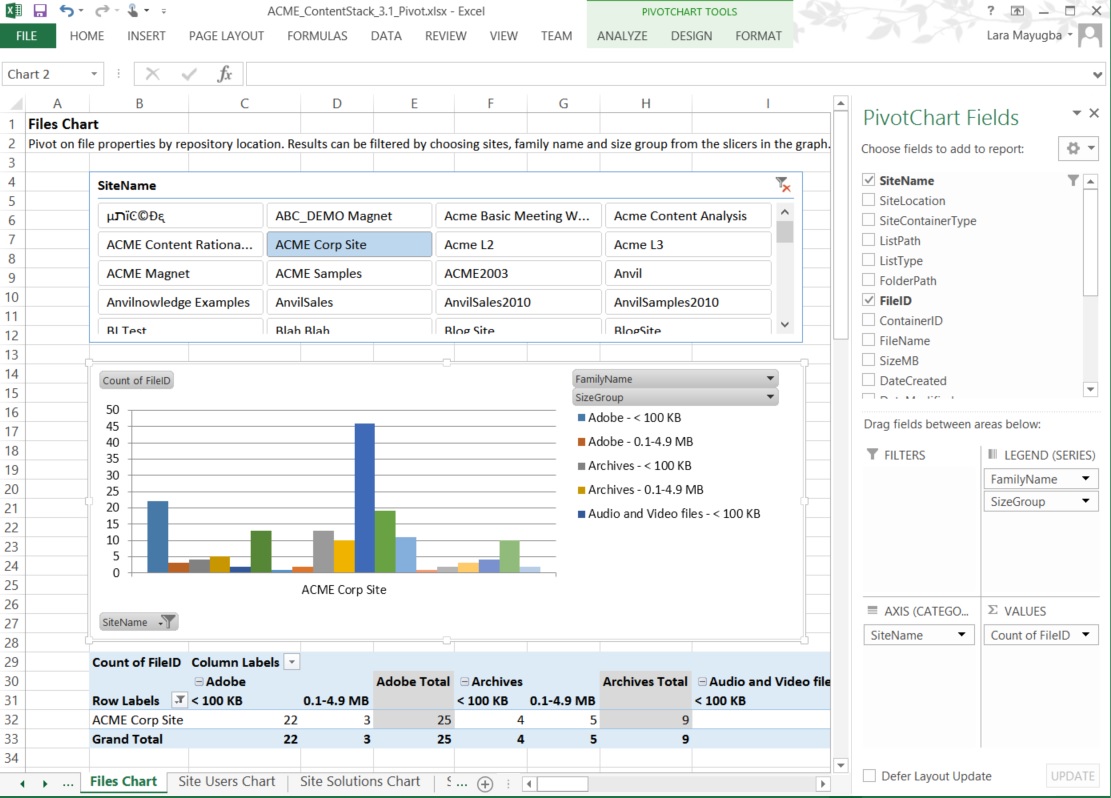The CASAHL Analyzer’s ultimate goal is to help enterprise migration planners figure out which content to migrate, and which sets of data should take priority during the migration. To that end Analyzer evaluates the data collected by Crawler and uses it to create detailed reports that include profiles of existing content, deployments, and usage patterns. These reports can be used for IT planning and investment discussions, including how to ease the transition for users by moving the content they use the most first, and equip transition planners with the information they need to make realistic estimates about the efforts and resources required for a successful migration. The reports also help transition planners reduce migration expenses by identifying resources that can be archived or deleted, thereby reducing the scope of the migration.
How it works:
The Analyzer uses time-tested algorithms to analyze the following inputs:
-
Composition: this input is a composite of source-system-dependent measurements (like the number of forms, views, and custom components like Web parts, for SharePoint deployments, and LotusScript code modules in Notes/Domino deployments) used to determine how complicated a given application or site is, and therefore how difficult it will be to migrate
-
Collaboration: this input is measured by analyzing the number of users and contributors who have used or contributed to an application or site
-
Volume: this input is measured as the total number of documents in a given application or site
- Activity: this input measures the activity levels of content, down to the site or document level, to help establish a baseline total cost of ownership (TCO) for later comparison with migration plans.
The pivot chart provided in this sample report lets enterprises review graphs and information about the status, content, and size of analyzed drives and their files in one convenient location.
Key Features:
Analyzer’s reports make it easy for CASAHL’s transition planners to identify straightforward and high-value migration opportunities. The same reports make it easy to identify low-value resources, such as applications and sites that have low (or no) collaboration and high complexity, and offer guidance on the best ways to handle those resources. These reports also enable enterprises to assess their active content and inactive content to decide what content needs to remain active and what can be moved to less expensive archival storage, thus keeping their TCO low. Analyzer’s reports also identify external dependencies, caused when systems such as SharePoint contain sites or apps which call out for external services to accomplish a task or retrieve data, that need to be dealt with before those sites or applications can be moved to the cloud. The reports themselves are delivered to the client enterprise in a combination of PowerPoint presentations and Excel workbooks to make further analysis of deployment details simple and keep the information readily accessible for non-IT personnel.
Business Impact:
Understanding the content in legacy systems is a key step for any migration; using that understanding to identify low-value and archive-ready content that doesn’t need to be migrated can dramatically increase the efficiency of a migration. We’ve found that organizations using the CASAHL Analyzer often reduce the total scope of their transition projects by up to 90% by identifying redundant and otherwise unproductive collaborative applications. Download the datasheet to learn more, or contact us for more information.

Related Pages:
“We found it to be the best solution for what we needed to do.”
-Django B, Sony Signatures

